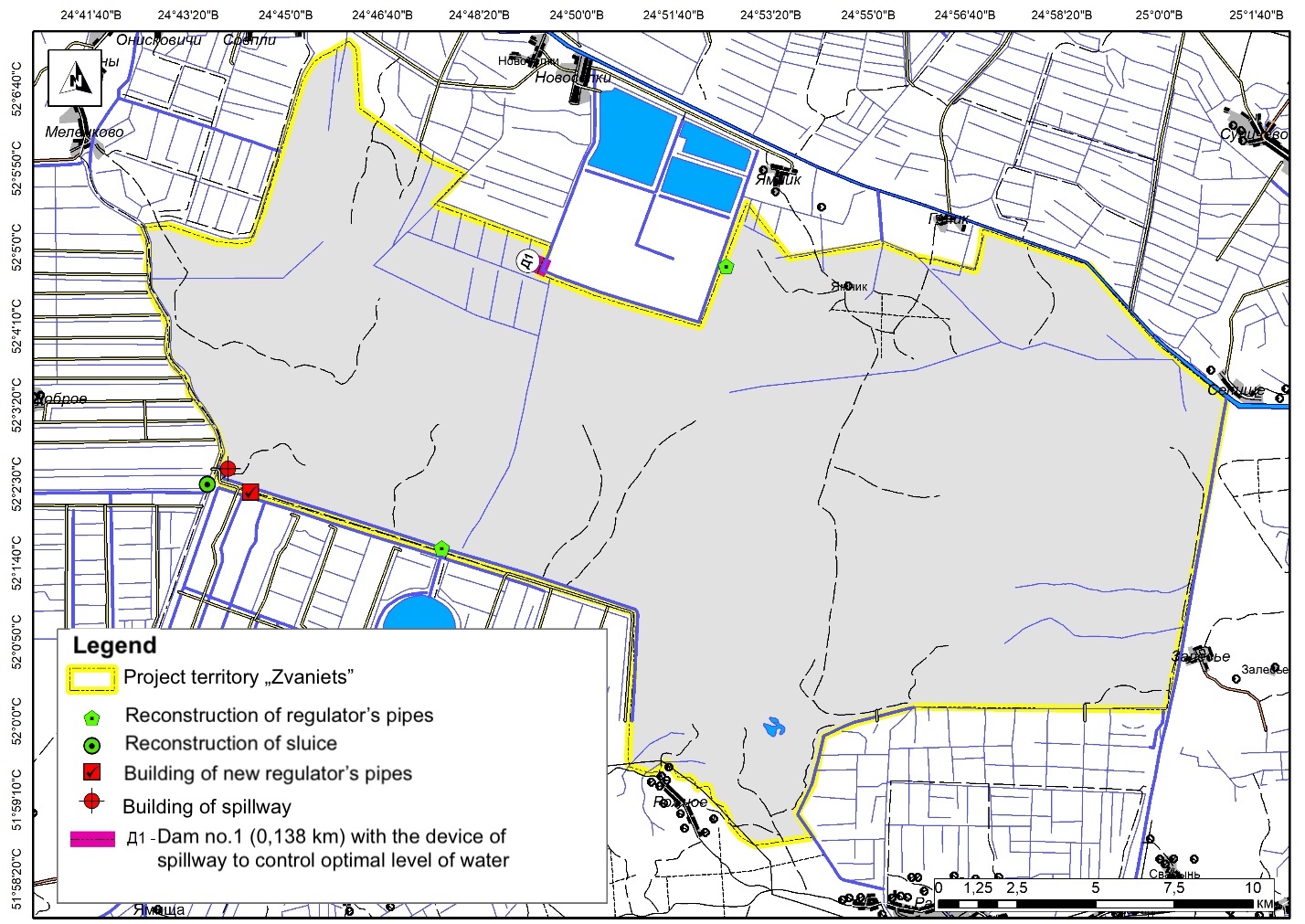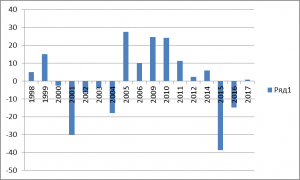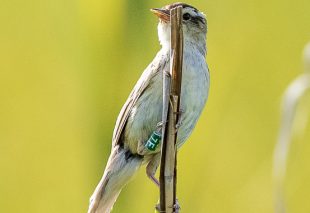 Monitoring of water levels in 2019 and 2020 indicates that naturalists managed to reach optimal dynamics of water for Aquatic warbler by installing water sluices in the most important specie’s breeding site – Zvanets mire.
Monitoring of water levels in 2019 and 2020 indicates that naturalists managed to reach optimal dynamics of water for Aquatic warbler by installing water sluices in the most important specie’s breeding site – Zvanets mire.
Zvanets – the most important site for Aquatic Warbler globally
Zvanets swamp is one of the most important site on a global scale for the Aquatic Warbler (Acrocephalus paludicola), a globally endangered bird species. About 25 % of the world population of the species and about 75% of the Belarusian population are concentrated on Zvanets.
The conditions for Aquatic Warbler deteriorated
In recent decades in Zvanets the state of habitats of this fenmire indicator species has got worse and worse, mainly because open sedge marshes got overgrown with reeds and bushes. As a result, over 60 % of the Zvanets swamp were dominated by reeds.
This lead to the decrease of suitable habitat area for Aquatic Warblers. Over the years, the number of these rare birds has decreased from 5000-7000 to 2100-4400 males.
Unsuitable water level caused reed dominance
One of the reasons of the increase of reed and shrub vegetation and, accordingly, the decrease of open sedge habitats, is unsuitable hydrological and hydro chemical regimes of the Zvanets swamp.
Drainage system destroyed natural cycles of water
Earlier before drainage system was set up in Zvanes mire, water entered the swamp from an extensive river catchment. This ensured a stable hydrological regime: high levels of water in the swamp in March-May (30 cm above the surface), a bit lower level (5-20 cm above the soil) in May-July and 10-30 cm below the soil surface in August-October.
In the 1970-1980s, more than 60% of the wetland was drained, and the remaining part of the swamp was cut off from the natural catchment. After the construction of a number of reclamation systems around the entire swamp, water enters the swamp from the pumping stations of the reclamation systems on the southern side of the swamp and from the Orekhovskij canal.
After building this drainage system, water from pumping stations with increased mineralization flowed directly to the center of the swamp. In years with normal and excessive rainfall, pumping stations pumped huge volumes of water directly into the center of the swamp for short periods of time, which led to flooding of the swamp. In years with a lack of rainfall, pumping stations did not work and the swamp remained completely dry.
In order to prevent flooding swamp in wet years and to ensure maximum flow of water to the swamp in dry years, there was a need to regulate the flow of water to the fenmire.
In addition, it was necessary to ensure a decrease in the salinity of the water entering the swamp from the reclamation systems.
Making water cycles back to more natural by building sluices
 As part of the EU LIFE project “LIFE MagniDucatusAcrola” , in 2018-2019 an engineering project to optimize the hydrological regime of the Zvanets mire was prepared and implemented. Number of water sluices were built. They allow to regulate the water level in a very simple way and prevent the excess of water coming inside the wetland – it stays in the surrounding canals. This normalized water regime during both – dry and wet years. In addition to regulating the volume of water, the project team also ensured that the flow of water would come not directly to the central most valuable part of the swamp, but rather to the periphery of the mire that is overgrown with reeds and shrubs. The idea is that the water will pass through the reed beds and the plants will partially be purify it. Therefore, less salty water (not more than 100-150 mg /l of salinity) will flow into the central part.
As part of the EU LIFE project “LIFE MagniDucatusAcrola” , in 2018-2019 an engineering project to optimize the hydrological regime of the Zvanets mire was prepared and implemented. Number of water sluices were built. They allow to regulate the water level in a very simple way and prevent the excess of water coming inside the wetland – it stays in the surrounding canals. This normalized water regime during both – dry and wet years. In addition to regulating the volume of water, the project team also ensured that the flow of water would come not directly to the central most valuable part of the swamp, but rather to the periphery of the mire that is overgrown with reeds and shrubs. The idea is that the water will pass through the reed beds and the plants will partially be purify it. Therefore, less salty water (not more than 100-150 mg /l of salinity) will flow into the central part.

Water level monitoring proved it works and saves from fires
Monitoring of water levels in 2019 and 2020 indicates that decisions on water management were correct and they allowed to create optimal dynamics of water levels in 2019. In 2020, because of absence of snow in winter and lack of rainfall in spring, lead to a water shortage and event to catastrophic fires in other surrounding bogs in Polesie region. Only in the Zvanets mire, because of the use of new water management system it was possible to provide the swamp with water and avoid catastrophic fires.















No comments!